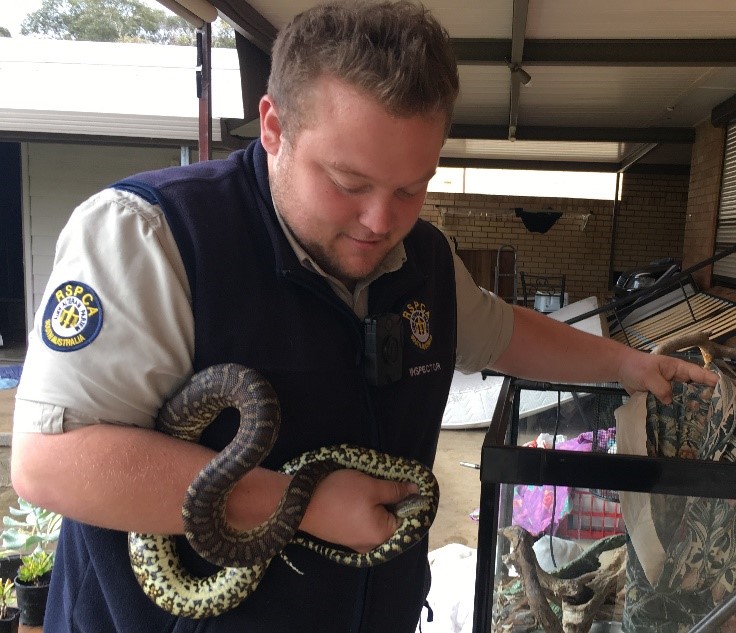The most commonly found and deadliest snake in South Australia, the Eastern Brown Snake, is starting to wake up from its long winter rest – and curious, playful pets are once again at risk.
With a bite that is often neither painful nor easy to detect, the Eastern Brown Snake is responsible for more deaths from snake bites (for humans and animals) than any other species of snake in Australia.
RSPCA South Australia is urging pet owners to be vigilant ahead of the anticipated increase in snake activity during their mating and breeding season. Every year, RSPCA South Australia Rescue Officers attend emergency calls to animals known or suspected to be the victims of snake bites.

Cats are the most commonly bitten animals, with owners often unaware until it’s too late that their cat has had a close encounter with a snake.
According to RSPCA South Australia Inspector Craig Dawe, it is vital to seek immediate veterinary care whenever a snake bite is even remotely suspected.
“You only have a small window of opportunity to save your pet if it’s bitten by a snake,” Mr Dawe said.
“Sometimes people have opted to monitor their pet because they’re unsure if it’s been bitten or not, but by the time symptoms become really obvious it is usually too late.
“The sooner anti-venom is administered, the greater the chances of survival – for humans and animals.”
Symptoms of snake bites include:
- Paralysis, starting with the hind legs
- Laboured breathing
- Vomiting
- Loss of bladder and bowel control
- Twitching and drooling
If your pet is bitten, RSPCA advises trying to keep the animal still and calm ahead of immediate vet care. If the vet is some distance away, a firmly applied bandage over the bite site (if known) can slow the spread of venom to the heart – but do not wash the wound or apply a tourniquet.
Like most snakes, Eastern Brown Snakes will avoid confrontations with humans and animals if they can. However, when they feel threatened or startled they will strike. Their fangs do not inject a lot of venom, but it is highly potent. In addition, their bites are more severe at the beginning of summer when their venom glands are still full after winter hibernation.
Eastern Brown Snakes become increasingly active during October and November as they emerge from hibernation and go in search of food and mates. Most babies hatch from February through to March.
Encounters with snakes can be avoided by:
- Clearing away places where a snake can hide, such as tall grass, woodpiles and sheets of corrugated iron (although leaving places where a snake can take shelter if chased by a predator such as a dog or cat can potentially keep them all safe)
- Erecting a snake-proof fence around all or part of your property
- Keeping your dog on a leash when in snake habitat such as bushland or long grassy areas
- Keeping cats indoors with access to a snake-proof outdoor enclosure (Advice on keeping cats happily contained can be found here.)
Mr Dawe says snakes should be respected and not harmed, as they are a protected species that plays an important role in Australia’s biodiversity.
“If you come across a snake, the best thing to do is to leave it alone and ensure that your pet does too.
“If the snake must be moved, then expert snake handlers need to be called – it is too dangerous to try to do it yourself.”
A recent study of fatal snake bites in Australia found that one fifth of the 35 people who died from snake bites between 2000 and 2016 were reported to have been bitten while trying to pick up the snake.
Information on avoiding snake bites and what to do if your pet is bitten can be found on RSPCA’s knowledgebase.








